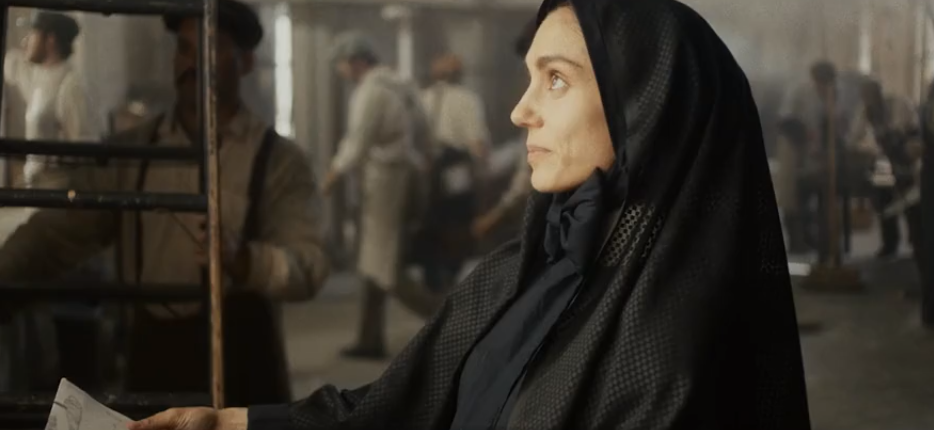A number of years ago, I was giving a presentation to Catholic school teachers about the history of Catholic education in the United States. To get things started, I asked them to imagine a movie about the story of Catholic schools and come up with a tagline to summarize the story. One woman called out, “Catholic Schools: Brought to you by The Women.”
The statement got a lot of warm laughter, and there is certainly a lot of truth to it. Yes, there have been Catholic brothers, priests, and lay men involved in Catholic schools in the United States, but the majority of teachers and principals have been women. According to NCEA data, lay women currently make up 75% of professional staff in Catholic schools around the country (54% at the secondary level, and 85% at the elementary level). They also make up 68.5% of Catholic school principals.
The lay women in Catholic schools today follow in the footsteps of many religious sisters, tracing back to St. Elizabeth Ann Seton and her Sisters of Charity. Many other teaching orders followed, staffing the growing number of Catholic schools around the country, including the Sisters of Mercy, Sisters of St. Joseph, Sisters of Loretto, Sisters of St. Francis, School Sisters of Notre Dame, and BVM sisters. These faith-filled, mission-focused women made a difference in the lives of countless students and thousands of schools and parishes.
The women serving in Catholic schools in the past and in the present, including the dynamic, committed women that Meitler has the privilege of working with in our Catholic school projects around the country, have provided and continue to provide important leadership in the Catholic Church. Because the Catholic Church does not ordain women, however, the extent of women’s leadership in the church is not always recognized. To help shine a light on that topic, Carolyn Woo (retired President of Catholic Relief Services) wrote a book in 2022 titled Rising: Learning from Women’s Leadership in Catholic Ministries. In the first half of the book, Woo offers observations and lessons about leadership. The second half of the book is made up of the stories of sixteen different women who are leaders in various segments of Catholic ministries, such as parish ministry, diocesan ministry, Catholic education, Catholic health care, and Catholic social service organizations. The leadership journeys of these diverse women are interesting to read, and the leadership lessons Woo offers are insightful and worthwhile. I recommend the book highly.
I was reminded of that book about Catholic women’s leadership last week when I went to see the film Cabrini, the story of St. Frances Xavier Cabrini and her work in New York City in the late 1800s. The film has received very positive reviews, and I found it to be compelling and inspiring.
The movie illustrates several key points from Carolyn Woo’s book.
Women have always provided leadership in the Catholic Church.
In her introduction, Woo explains some of the motivation for writing her book: “I do not hold the view that women’s leadership in the Catholic Church is as rare, unusual, and out of reach as the perceptions held by many people inside and outside of the church.” She points out that leadership and authority are not the same thing. Leadership can be exercised by any person in any position; it does not require a particular title. St. Frances Cabrini, like so many women in the Church, showed leadership by responding to the needs in front of her and by influencing others to respond as well.
One of Cabrini’s lines in the film (that was taken from one of her actual letters) reminds us that women’s leadership can be traced back to the very beginning of the church. In response to a clergyman who told her that missionaries were typically men, Cabrini pointed out that the mission of announcing the resurrection to the apostles had been entrusted to a woman, Mary Magdalene, and that therefore it seemed fitting for other women to engage in an evangelizing mission as well.
Women leaders in the Church exhibit initiative and persistence.
Mother Cabrini’s mission to the Italian immigrants in New York City did not happen because someone with ecclesial authority sent her. She wasn’t sitting in Italy waiting for direction. She took the initiative and asked for approval to go on an overseas mission. After being turned down, she asked again. And again. It took a great deal of persistence before she finally arrived in New York. She then had to demonstrate initiative and persistence in order to get her first orphanage up and running, and then later to get her first hospital built.
Carolyn Woo describes a similar dynamic in her book, saying that the women leaders she profiles in the book take ownership of problems. They don’t leave problems unsolved so they can play it safe and not be seen as rocking the boat. They don’t let the job description be the finish line where they stop; instead, they go the extra mile if that is what it takes to resolve the issue.
Women leaders in the Church seek to bridge differences.
Another characteristic that Woo sees in the leaders in her book is a commitment to reach across boundaries and bridge differences. They seek collaboration as much as possible, engaging multiple stakeholders and trying to decrease polarization.
The movie shows Frances Cabrini building bridges as well. She was certainly willing to confront the prejudice people exhibited toward the Italian immigrants, but she never condemned the people themselves. She collaborated with an Irish doctor, solicited support for her hospital from a wide range of other immigrant groups, and eventually found a way to reach an understanding with the initially antagonistic mayor.
Overall, the movie shows Mother Cabrini living out her vocation, pursuing her mission to build “an empire of hope.” Her story can inspire us all, women and men, to pursue our own missions more passionately and persistently. It can also remind us of the vital, but sometimes unappreciated, service that Catholic women leaders have provided in so many ways for so many years.


